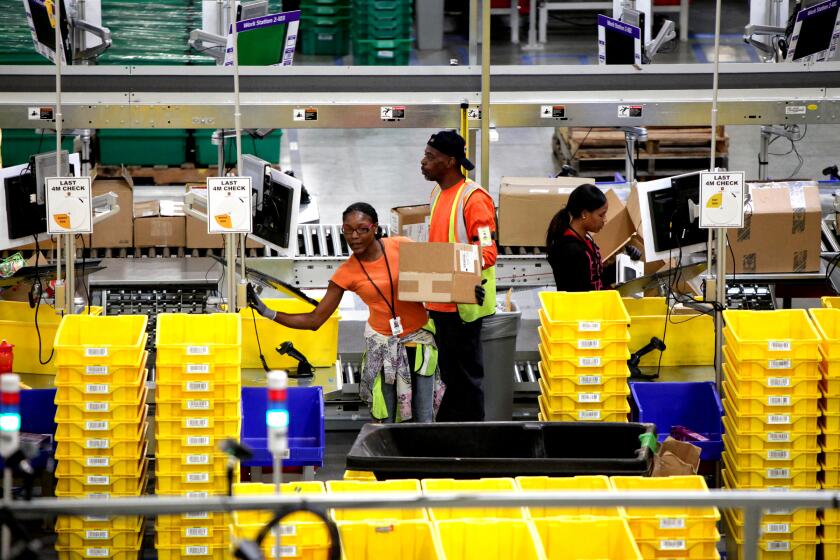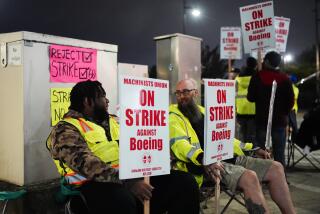A last-minute deal stopped a massive railroad strike. Here’s how it happened
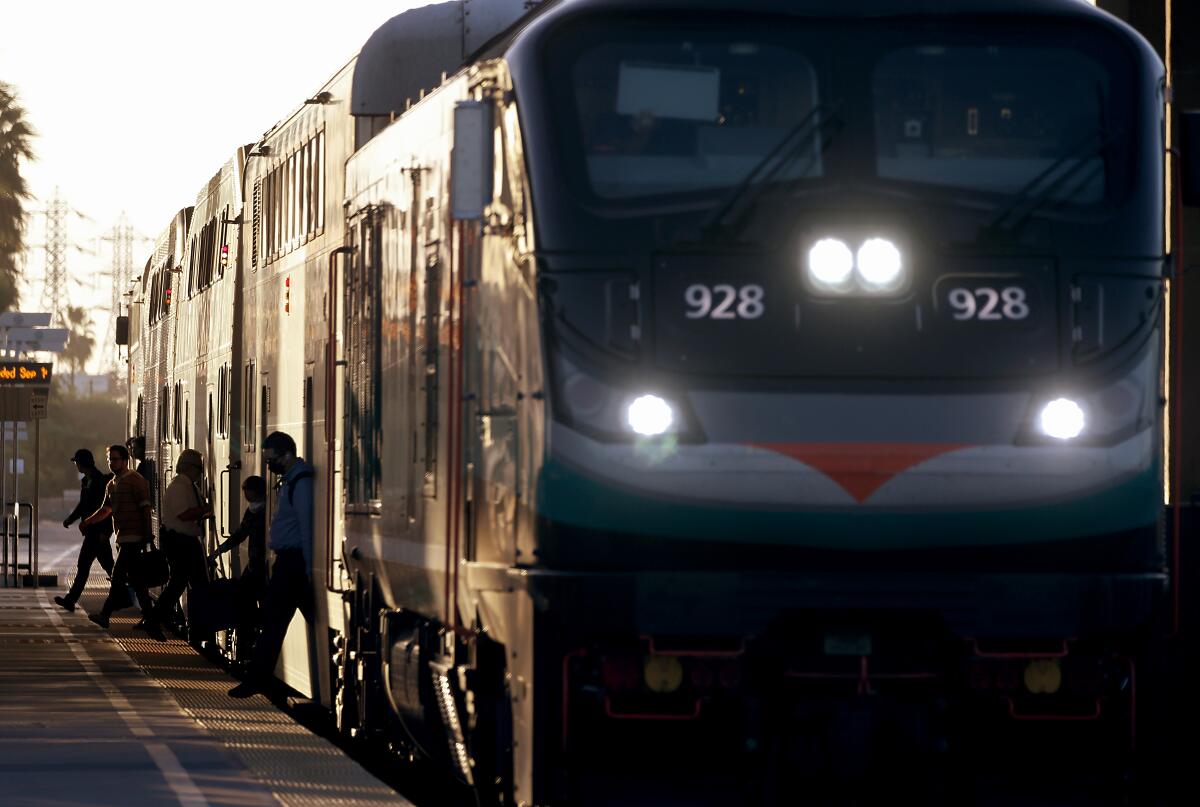
WASHINGTON — President Biden on Thursday celebrated a last-minute agreement between railway companies and union leaders averting a potential strike that could have slowed commerce and delivered another blow to an already volatile economy.
“This agreement is a big win for America,” Biden said during a hastily arranged event in the White House Rose Garden. “It’s a win for tens of thousands of rail workers and their dignity.”
The tentative agreement, which must be ratified by 125,000 union members, emerged in the early morning hours after round-the-clock negotiations at the Department of Labor overseen by Secretary Marty Walsh.
Biden called into the meeting room Wednesday around 9 p.m. to impress upon negotiators the urgency of averting a strike, according to an administration official. He warned it could affect millions of Americans by slowing supply chains and driving up the cost of goods at a time when inflation is at a four-decade high.
“This agreement can avert the significant damage that any shutdown would have brought,” Biden said. “Our nation’s rail system is the backbone of our supply chain.”
Railroad and union officials applauded the agreement, reached after three years of bargaining. “We listened when our members told us that a final agreement would require improvements to our member’s quality of life as well as economic gains,” said Jeremy Ferguson, president of the SMART Transportation Division and Dennis Pierce, president of the Brotherhood of Locomotive Engineers and Trainmen in a joint statement.
“This agreement includes provisions that will create voluntary assigned days off for members... Most importantly, for the first time ever, the agreement provides our members with the ability to take time away from work to attend routine and preventative medical, as well as exemptions from attendance policies for hospitalizations and surgical procedures.”
With the congressional midterm elections less than two months away, the political subtext was impossible to overstate. A railway strike could have hurt Biden and Democrats in November by exacerbating inflation, already the party’s biggest liability with voters. Senate Democrats on Wednesday had blocked a Republican effort to impose a contract endorsed by the railroads.
Biden, who as a senator rode Amtrak trains nightly between Washington and his Delaware home, thanked railway workers for showing up during the pandemic and touted their gains as part of the new agreement, including a 24% pay increase by 2024 and, for the first time, the right to take time off for routine and preventative medical care.
He said those benefits will also help the railway companies, which have slashed their workforces in recent years, by enabling them to better hire and retain workers.
Standing with representatives of both sides, Biden thanked everyone involved in the talks and said the agreement was “validation of what I’ve always believed: unions and management can work together ... for the benefit of everyone.”
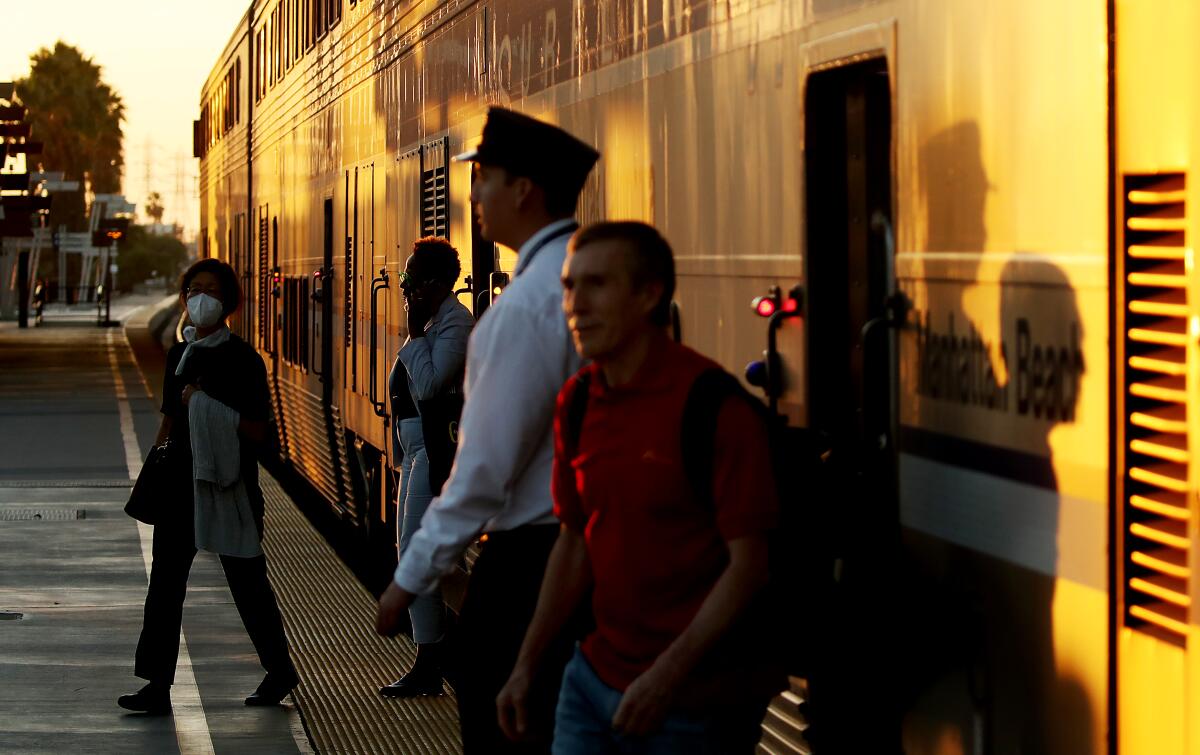
How would the deal help railroad workers?
According to union leaders, the sticking points were what they called draconian attendance policies and the penalizing of workers for taking unpaid sick leave. But a compromise over wage increases, agreed to after deliberations by a Biden-appointed panel, was also key to the outcome. Rail workers had not had a raise since 2019.
The tentative agreement, outlined by the unions, calls for an immediate wage boost of 14%, with an additional 4% on July 1, 2023, and 4.5% on July 1, 2024.
In addition, raises of 3% effective July 1, 2020, 3.5% effective July 1, 2021, and 7% effective July 1, 2022, will be fully retroactive, for a compounded increase of 24% over the five-year term of the agreement. The agreement also includes annual lump sum bonus payments totaling $5,000.
The parties’ health costs will remain unchanged; there will be no increases to copays and deductibles and there are no disruptions to the existing healthcare networks.
What was at stake for the economy?
A railroad strike could have devastated businesses that rely on Union Pacific, BNSF, Norfolk Southern, CSX and other major freight railroads to deliver raw materials and ship their products — another possible burden for industries that struggled through years of pandemic-induced supply chain snarls.
Follow a container of board games from China to St. Louis to see all the delays it encounters along the way.
Railroads “move 40% of the freight-ton-miles in this country,” said John Drake, an executive at the U.S. Chamber of Commerce. “One-third of all exports move by rail. If it’s grain, if it’s chemicals, if it’s cold, it’s moving by rail.”
The Assn. of American Railroads trade group had estimated that a strike would cost the economy $2 billion a day.
About 300,000 barrels of crude oil is shipped by rail every day, and refineries might have had to slow production if deliveries were delayed, according to the American Fuel & Petrochemical Manufacturers. Analysts warned of gasoline and diesel shortages
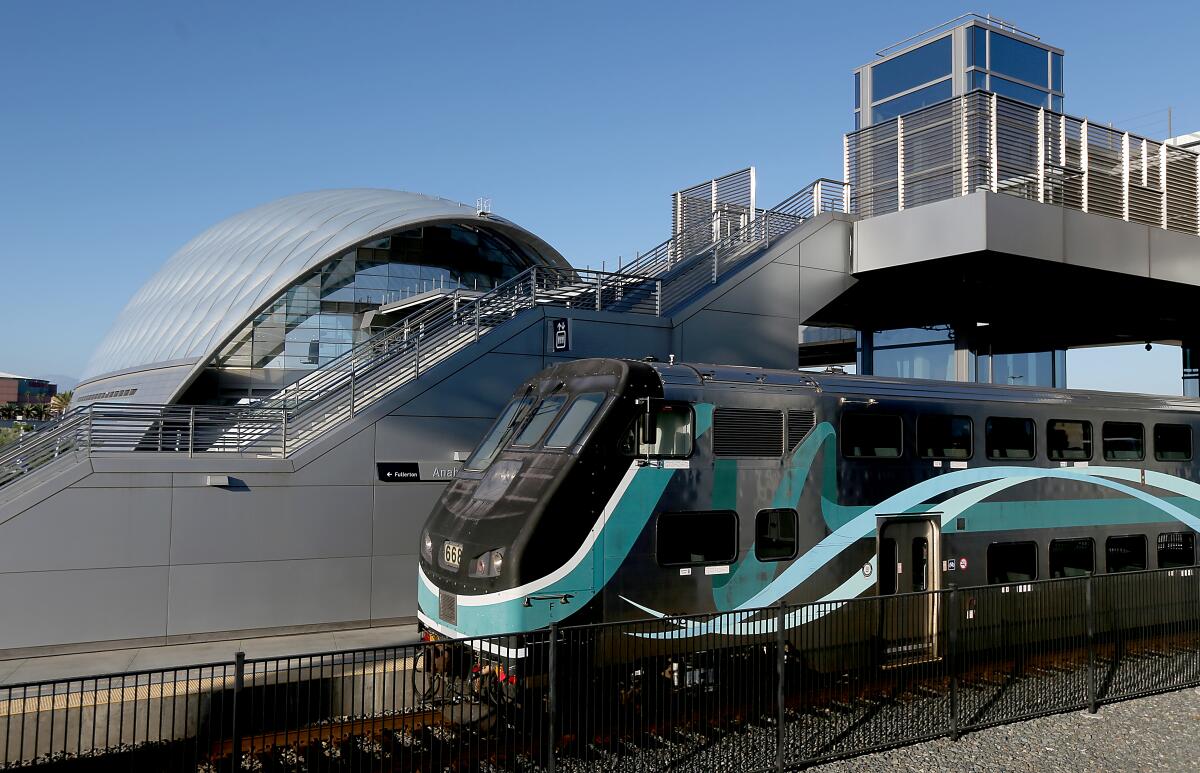
New vehicles are usually shipped from the factory or dock by rail. A strike would have meant longer wait times for dealers and car buyers who have already been stymied by pandemic-related delays.
Most worrisome was how a strike could have fueled inflation. Food is a main driver of higher prices. The railroads had announced plans to stop shipping refrigerated items ahead of the strike deadline, potentially affecting deliveries of produce and meat. Farmers could have suffered as shipments of feed to livestock and poultry were interrupted.
With a rail strike idling 7,000 long-distance trains a day, the trucking industry, which is also facing worker shortages, would have been unable to fill the gap.
And consumers could have paid the price. Tom Madrecki, vice president of supply chain and logistics for the trade group Consumer Brands Assn., said many of his members were especially worried about access to raw materials, including wheat, peanuts and the plastic pellets used in making bottles.
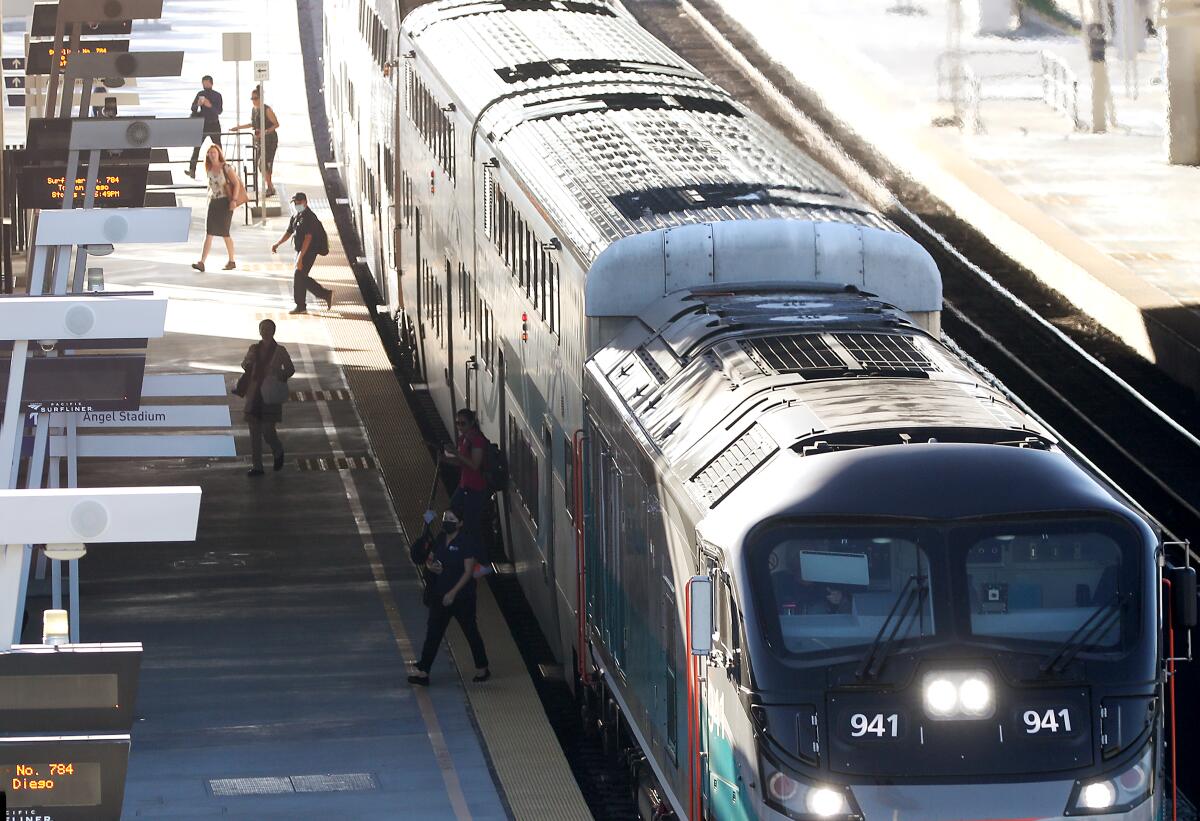
Producers of packaged foods sold in grocery stores or pharmacies could have held out for a week or so. But without raw materials they could face shortages themselves, he said.
“It shouldn’t be consumers can’t get food period, but very quickly, there’s only so much safety stock,” he said.
Water agencies also raised red flags. With shipments of chlorine for cleaning water sitting on the tracks, several said a strike could threaten public health.
“Unless freight rail service for chlorine returns to normal soon, communities will be unable to produce safe drinking water, resulting in many boil-water advisories and the threat of waterborne disease outbreaks,” said a joint letter sent to Congress by some of the nation’s leading water associations.
How would California have suffered?
A strike would have had far-reaching consequences for the Golden State.
California’s multibillion-dollar agricultural industry would have suffered. Railroads typically transport roughly 60,000 carloads of food and agricultural products a week.
Freight operators had already started to limit the shipments of hazardous materials, including materials used for fertilizers by the state’s farmers.
The nation’s largest water wholesaler, the Metropolitan Water District of Southern California, said customers worried a strike would leave them without supplies. The district provides water in six counties, including Los Angeles, for more than 19 million people. Many water providers that purchase from the district buy disinfecting chemicals that are largely delivered via train on an as-needed basis and don’t have a reserve inventory.
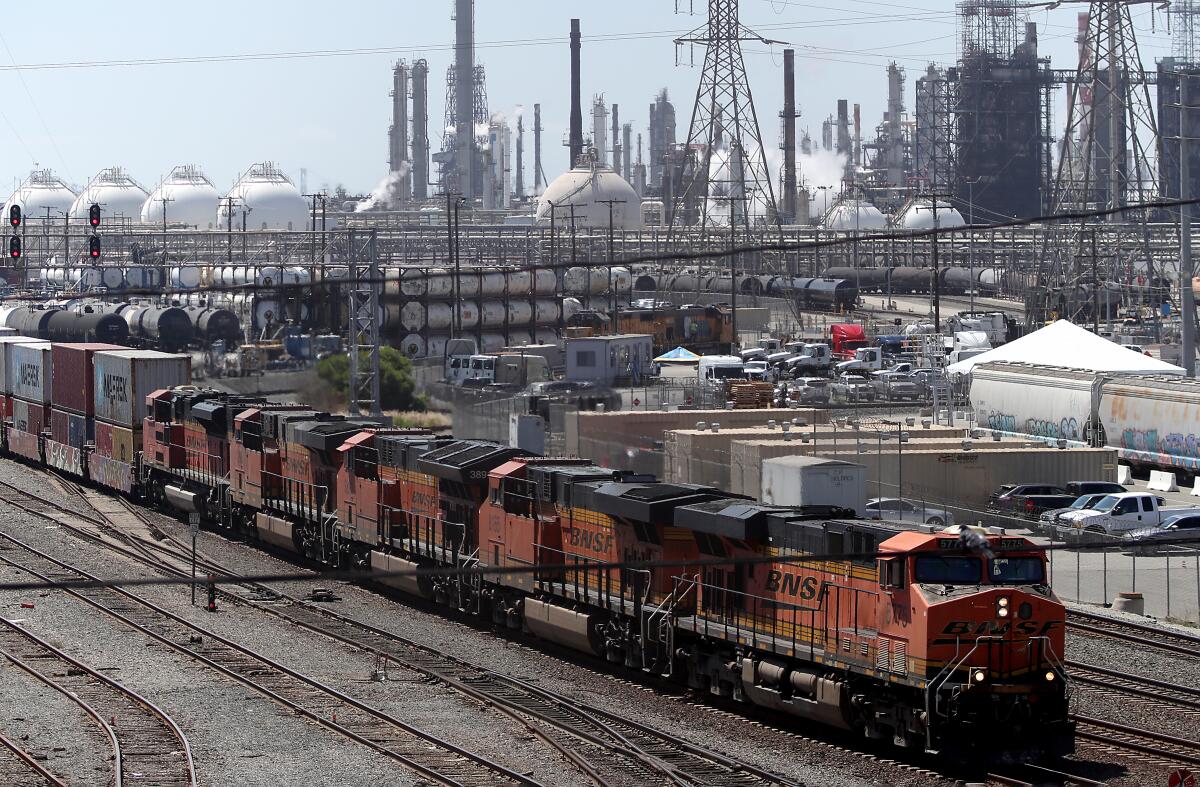
The district has said it keeps a one-month supply on hand, but shipments stopped after the rail companies halted deliveries of hazardous waste.
A two-week supply of chlorine alkali chemicals was sitting on the tracks somewhere in Southern California, and the district couldn’t get it, said Heather Collins, Metropolitan’s manager of water treatment.
And commuters could have been stranded.
Metrolink and Amtrak, which operate the majority of their service on freight-owned tracks, were prepared to cut services.
Five of the seven lines that Metrolink runs would have seen cancellations of service beginning at 8 p.m. Thursday, if a strike occurred.
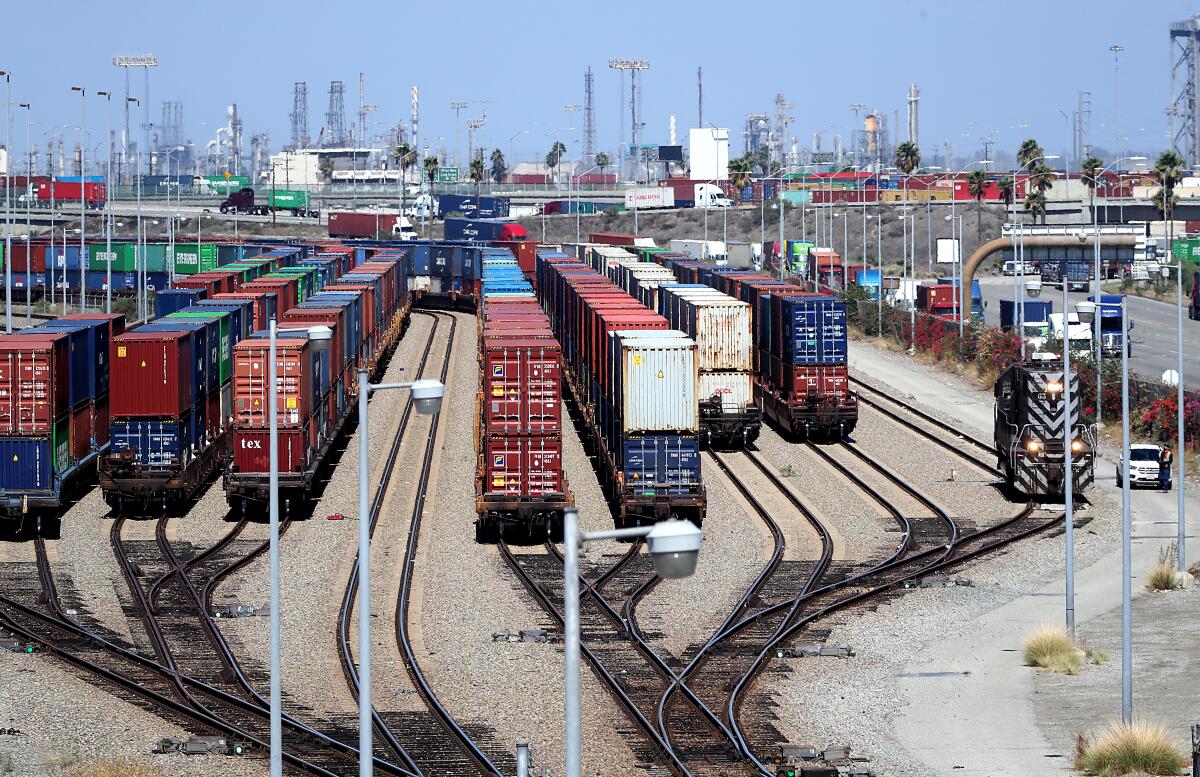
Lines that connect Los Angeles to Riverside, the Perris Valley and Oceanside, along with another line that connects the Inland Empire and Orange County, would have been suspended. Metrolink had coordinated with Amtrak Pacific Surfliner train service to allow ticketed passengers to ride between Oceanside and Fullerton with a bus connection to Los Angeles.
Amtrak had canceled all long-distance rail service nationwide beginning Thursday including trains that run to Chicago from Los Angeles and San Francisco and along the West Coast from Seattle to Los Angeles.
Amtrak said early Thursday that it was restoring canceled trains and reaching out to customers to accommodate available departures.
Along the docks of the Los Angeles and Long Beach ports, still reeling from the pandemic-induced supply chain crunch, officials were bracing for more backups.
Two-thirds of all cargo leaves California by rail. Already, cargo boxes headed for rail cars are piling up, with a backup three times normal.
How had it come to this?
No railroad strike had occurred in the last three decades.
But in sweeping cost-cutting measures, the largest freight railroads have slashed their workforces by 29% in the last six years, according to data supplied to the U.S. Surface Transportation Board. They have shut down less-profitable routes, consolidated railyards and run fewer, longer trains, thus snarling roadway crossings.
Rail workers have gone without a raise since 2019 as the companies’ profits have boomed and stock buybacks have boosted shareholder values. BNSF, owned by Warren Buffett’s Berkshire Hathaway, reported record net earnings of $5.99 billion in 2021, up 16.1% from 2020. Union Pacific had its most profitable year ever in 2021, with net income of $6.5 billion, up from $5.6 billion in 2020.
Rail employees remained on the job throughout the pandemic, often working mandatory overtime to compensate for staff cuts and defections. Workers complain they are unable to get sufficient rest between shifts because of stricter on-call policies.
California Atty. Gen. Rob Bonta announces suit against Amazon for barring third-party merchants from offering lower prices on competing platforms.
Nonetheless, rail workers are penalized under a points system if they miss work to go to the doctor without scheduling a medical visit in advance. Too many points results in termination.
“Our members are being terminated for getting sick or for attending routine medical visits as we crawl our way out of a worldwide pandemic,” Ferguson, of the SMART Transportation Division, and Pierce, of the Brotherhood of Locomotive Engineers and Trainmen, said in a joint statement.
“These employment policies have forced thousands of employees out of the industry and make it all but impossible to recruit new workers.”
Railroads say stricter attendance standards and “precision” scheduling were needed to compensate for staff shortages.
Railroads were also pushing to cut mandated two-person crews in each train to one person, a strategy that unions say would result in more crashes and injuries, with exhausted workers vulnerable to falling asleep.
The impasse came at a time when workers across the economy are rebelling against mandatory overtime, unpredictable scheduling, production quotas, workplace surveillance and other onerous practices that boost corporate profits but take a toll on workers’ health and family life. Interest in forming unions is rising as a result.
What did Biden’s panel recommend?
To ward off a strike, Biden convened an emergency panel that recommended pay raises of 24%, including an immediate raise of 14%, and bonuses of $5,000 over five years. The panel’s 124-page report also said workers should pay more for health insurance.
Union officials had asked for a 31% pay raise over five years. Railroads had offered 17%. Unions said the pay boost would not keep up with inflation, which reached 8.3% last month. But they were willing to accept a compromise.
Although several smaller unions, including maintenance workers, had accepted the panel’s recommendations, the two largest unions, representing 57,000 conductors and engineers, said they would strike unless railroads adopted changes to what they call draconian scheduling and sick leave practices. Nearly 5,000 workers represented by the International Assn. of Machinists and Aerospace Workers also rejected the panel’s recommended contract. Members of the smaller unions would refuse to cross picket lines, their leaders said.
What did the unions want?
Unions gave up their initial request for paid sick leave, but they were adamant that workers needed access to unpaid leave to go to the doctor, without being penalized for last-minute requests.
Workers can be on call for 14 days straight and even when they return home from a trip, they can be roused in the middle of the night to work another shift.
Over 17 years, Michael Paul Lindsey, a Union Pacific engineer, worked out of Roseville, San Luis Obispo, Fresno, Oakland and, finally, Pocatello, Idaho — wherever the railroad needed him most.
28-year-old Dominic Green signed out of his shift on a Wednesday afternoon. Five days passed before his body was discovered.
In 2018 and 2019, the company’s “precision scheduled railroading” practices meant “cutting conductors and engineers, maintenance, signal department, track, mechanical management,” he said. “And they expect everyone left to carry the burden and work longer hours to make up for what those employees used to do.”
He spends about 200 days a year away from home and, at age 35, he says, “I’m exhausted. We’re on call 24 hours a day, seven days a week, whether it’s Christmas or not. They wake you over and over in the middle of the night because they are out of people.
“There’s weeks that you’re out of town for 48 hours and you’re home for 10 hours and then you have to go out for another 48 hours again, and you do that over and over again.”
Lindsey made $83,000 before taxes last year. “Of course, you’re gonna make a lot of money,” he said, “but you’re never home.”
The absences have taken a toll on his 11-year-old daughter, Emma, he said. “She has fallen behind in school, and I can’t be there to help her very often. It makes me feel horrible.”
When he is out of town, Union Pacific gives him $12 to cover his meals for two days. He is put up in a cheap hotel, but the first 16 hours of a layover are unpaid.
“The railroads have lost the loyalty of an entire generation of skilled, experienced workers,” he said. “We can and will walk away.”
BNSF Railway made some adjustments to its new attendance policy in May, but workers can still be terminated if they miss work on “high impact” days when there is heavy demand.
One change could be dangerous, unions say. “BNSF’s proposal to reward the ‘top performers,’ or those who have the top 10% of work hours, is a clear attempt to incentivize these fatigued workers to double down,” said Greg Regan, president of the AFL-CIO’s Transportation Trades Department.
What did rail officials say?
Asked for comment before the tentative agreement, a Union Pacific spokeswoman had said in an email, “Considering the looming possibility of a national rail labor strike, we are prepared to take the proactive steps to secure our customers’ goods…. What we want, and continue to push for, is a prompt resolution that provides historic wage increases to employees and allows the railroads to restore service as soon as possible, preventing further disruption to the struggling supply chain.”
A BNSF spokeswoman denied that workers are unable to take time off for illness or medical appointments.
“More than 50% of train crew employees work less than 40 hours a week on average,” she wrote in an email. “Generally, train crew employees have over three to four weeks of paid vacation and more than 10 personal leave days.
“Depending on craft and seniority, these numbers can extend to five weeks of vacation in addition to 14 paid holidays and/or paid leave days.”
Sick leave and attendance issues can be addressed through binding arbitration and are also being addressed through higher wages, she wrote. However, the railroad is open to “further local negotiations regarding issues relating to schedule predictability and time off,” she said.
The Associated Press and Bloomberg contributed to this report.
More to Read
Inside the business of entertainment
The Wide Shot brings you news, analysis and insights on everything from streaming wars to production — and what it all means for the future.
You may occasionally receive promotional content from the Los Angeles Times.

